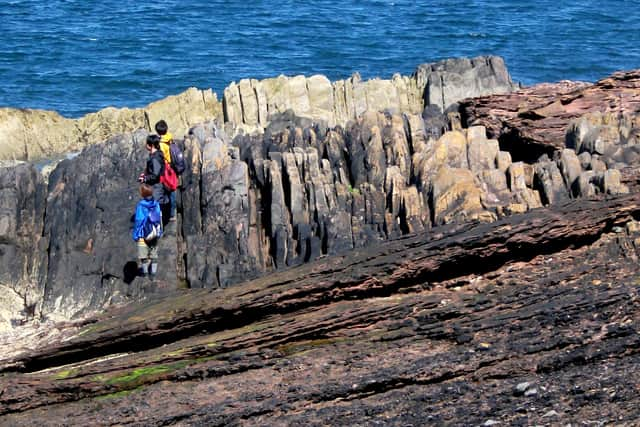Scottish geological landmarks inducted into world’s ‘rock’ hall of fame
The Moine Thrust Zone, in the north-west Highlands, and Siccar Point, on the south-east coast, have been included in a list of the First 100 Geological Heritage Sites, compiled by the International Union of Geological Sciences.
The pair join many of the planet’s most famous landmarks, including Mount Everest, the Grand Canyon and Sugar Loaf Mountain. The sites all possess significant global scientific relevance and have provided a substantial contribution to the development of geological knowledge.
Advertisement
Hide AdAdvertisement
Hide AdSiccar Point is an eye-catching rocky promontory on the coast of the Scottish Borders. It was first described in 1788 by James Hutton, the ‘father of geology’, as an example of an angular unconformity – a junction between two sets of rocks of different ages.
Hutton’s studies of these formations revolutionised science, providing a unique glimpse of “deep time” and the great cycles in earth’s history. Although relatively unknown locally, Siccar Point has been inspiring researchers for centuries and is widely recognised as the most important geological site in the world.
The Moine Thrust Zone is a major tract of ancient tectonic faulting where rocks have been moved sideways for more than 62 miles. It can be traced from Cape Wrath, on mainland Scotland’s north coast, southwards to the Isle of Skye.
Analysis of the faultline, recognised in the 19th century, revolutionised understanding of tectonic movement in mountain ranges around the world. Today its landscapes form the heart of the North West Highlands Unesco Geopark and the popular North Coast 500 tourist trail.
Prof Robert Holdsworth, chair of the Scottish Geology Trust, has welcomed recognition of the sites.


He said: “There is a very strong argument that says that the science of geology came into being from observations first made in Scotland. These are places where humankind made gigantic conceptual leaps forwards in our understanding of earth processes and the passage of geological time. Such extraordinary and visually captivating localities are an inspiration to current and future geoscientists worldwide and are the centrepiece of what makes the rocks of Scotland so special.”
Comments
Want to join the conversation? Please or to comment on this article.